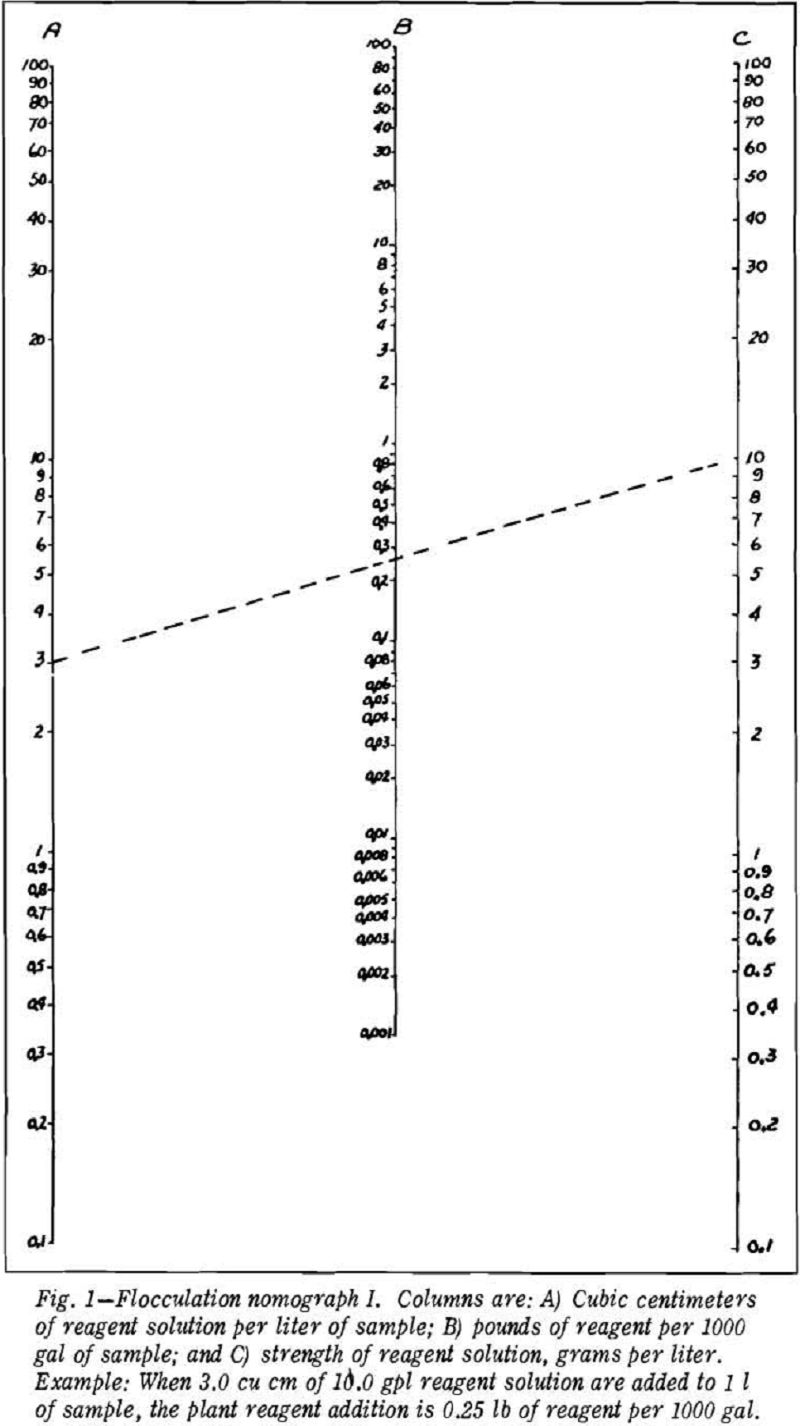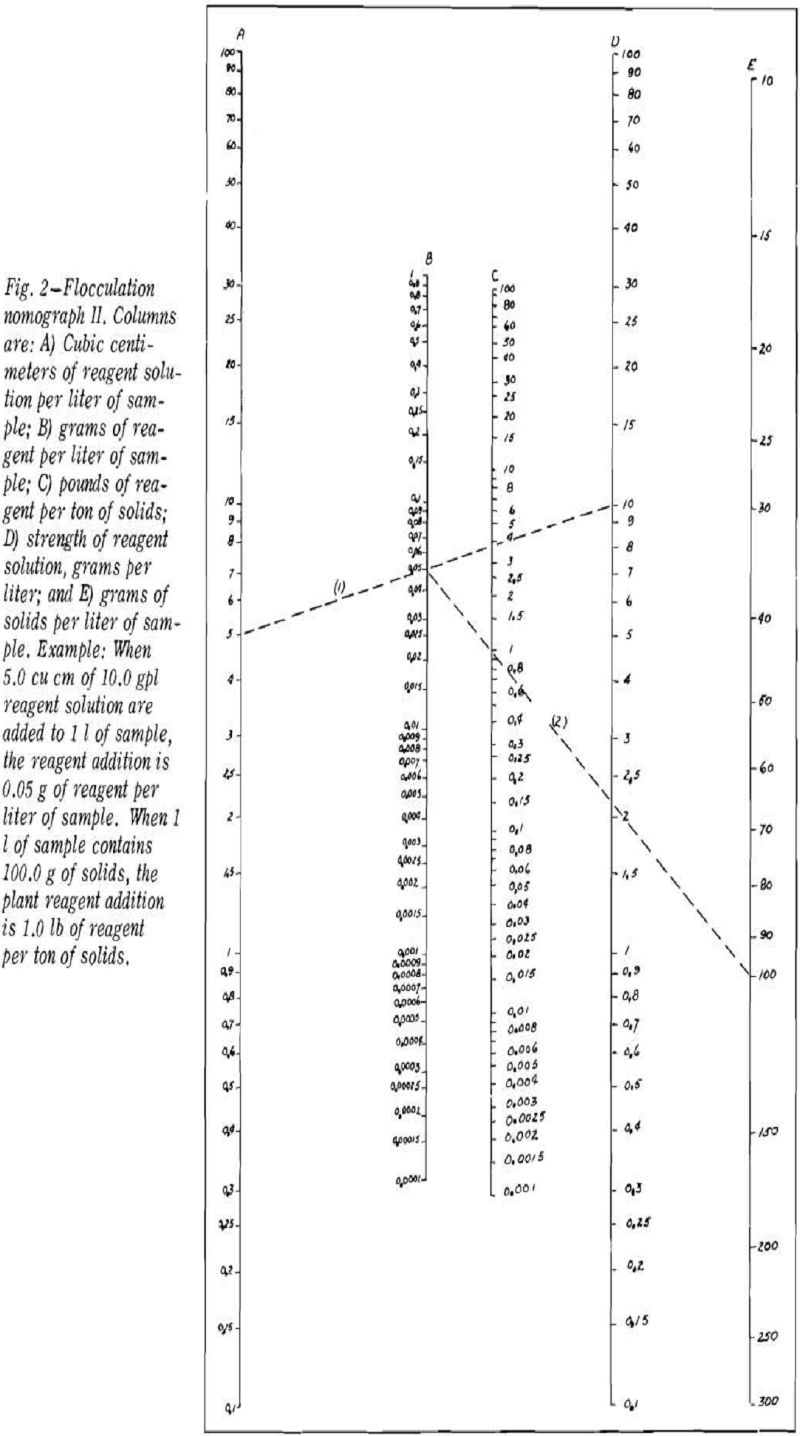When is use of a flocculant justified in terms of overall process economy?
- when it results in process improvement, such as producing a clear liquor for electrolysis, precipitation, ion exchange, or solvent extraction;
- when it results in satisfying requirements of pollution abatement ordinances;
- when it results In increased recovery of values that would otherwise be lost; or
- when it results in considerable savings in capital expenditure due to use of smaller equipment.
Flocculation is a process wherein individual particles are united into more or less tightly bound agglomerates or flocs, thereby increasing effective particle size of solids suspended in a liquid.
Degree of flocculation of a suspension of finely divided solids in a liquid is controlled by a combination of probability of collision between particles and probability of adhesion after the collision has occurred. Probability of collision can be increased commercially through use of a paddle-type flocculator, combination flocculator, and clarifier or flocculating-type feedwell. Probability of adhesion usually can be increased by addition of a reagent known as a flocculant.
Reagents act as flocculants through one or a combination of three possible mechanisms. The first is electrolytic neutralization of intermolecular repulsive force due to Zeta potential. This neutralization enables Van der Waal’s cohesive force to hold the particles together after they collide. The second is the precipitation, within a definite pH range, of voluminous metallic hydroxide flocs which entrap fine particles.
The amount of flocculant used in a test has a marked effect upon results. In some cases, use of too much flocculant gives less satisfactory results than may be obtained with a smaller dosage. Therefore, the best dosage at which to start in evaluating a flocculant is near the upper limit of commercial dosage range listed in column 8. If this dosage is effective, progressively smaller dosages can be tried. If not, the reagent can be eliminated from further consideration. Larger dosages are generally required when flocculating a thick pulp due to the poor dissemination of the reagent.
Testing methods for determining the effectiveness of flocculants are well established and procedures are available in the literature. All tests should first be performed on pulp without any flocculant so that there will be a standard for comparison. Important factors in a thickening operation are settling rate of the flocs at a given initial solids concentration and underflow concentration. The flocculant’s effect upon floc settling rate can be observed by noting the time required for the solid-liquid interface to settle a specified distance in a graduated cylinder at the feed solids concentration. A more quantitative result can be obtained by using Coe and Clevenger or Kynch type of thickening tests. The flocculant’s effect upon underflow concentration can be determined by measuring pulp volume after settling has ceased. These tests should be run with equipment to simulate action of thickener rakes.


